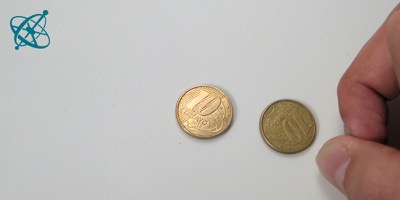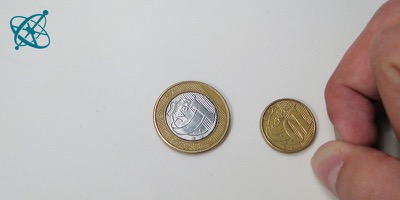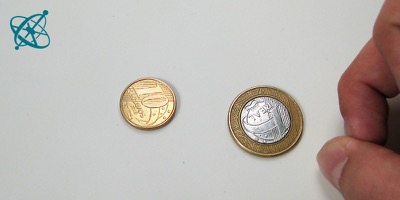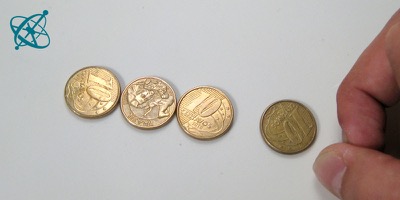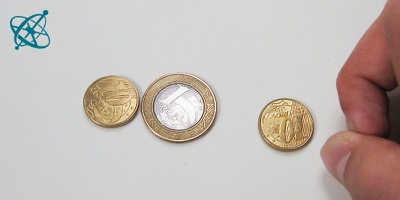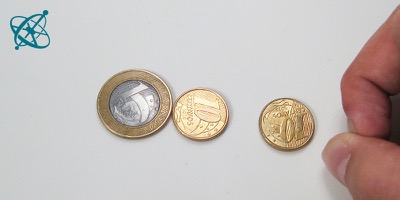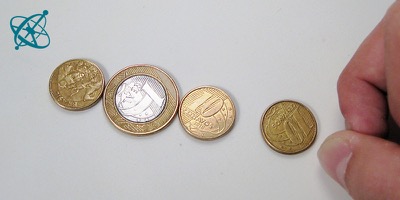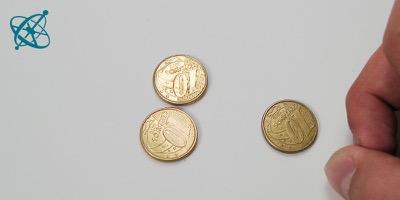 www.sciensation.org | Ciênsação hands-on experiments are published as Open Educational resources under a Creative Commons Attribution-ShareAlike 4.0 International License.
www.sciensation.org | Ciênsação hands-on experiments are published as Open Educational resources under a Creative Commons Attribution-ShareAlike 4.0 International License.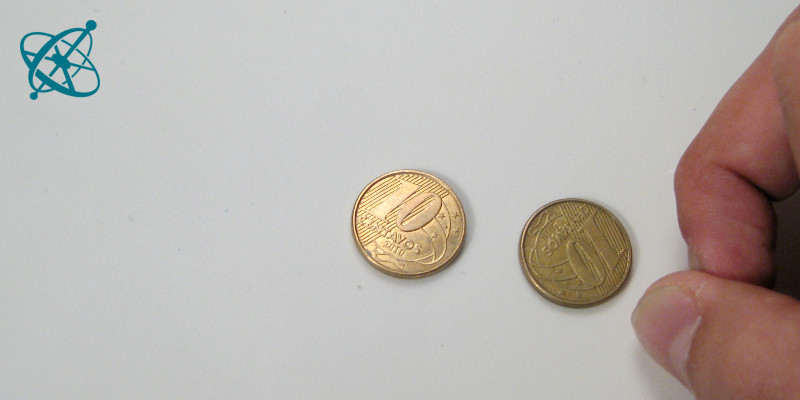
What will happen when you snip and the coins collide?
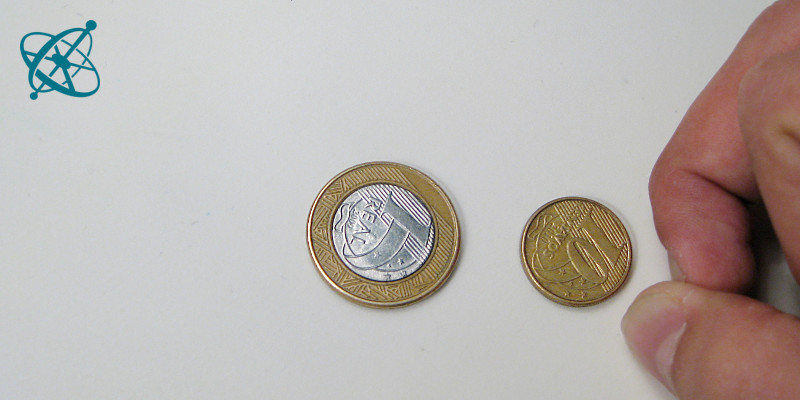
Ok, and now?
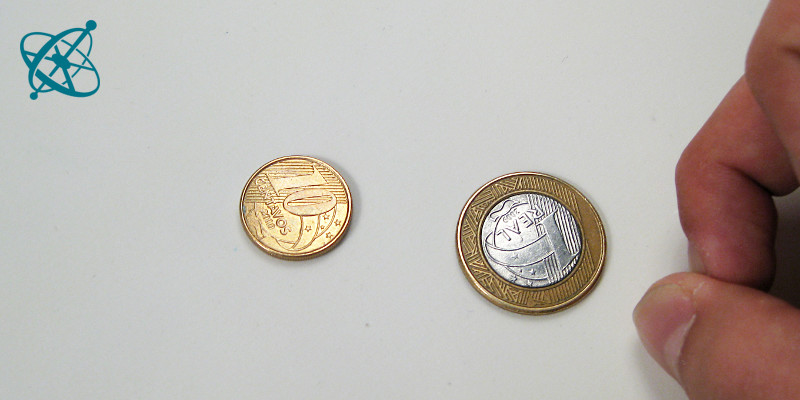
And the other way round?
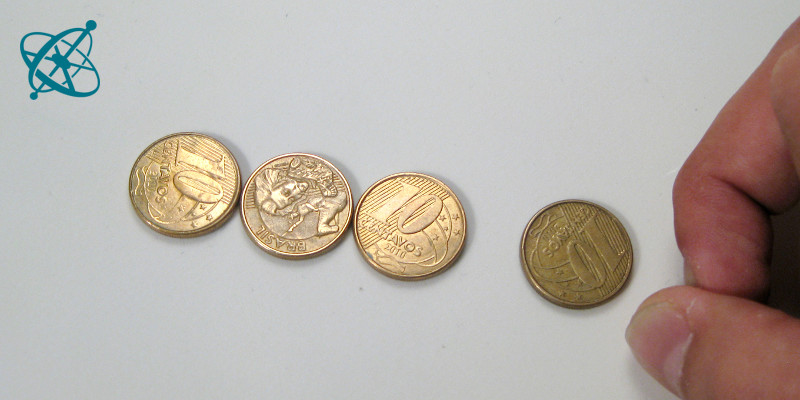
Newton's cradle in flat…
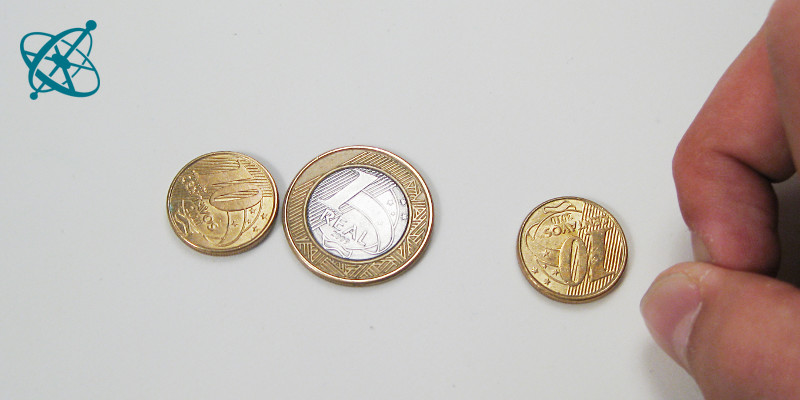
…lets you 'have a shot' on…
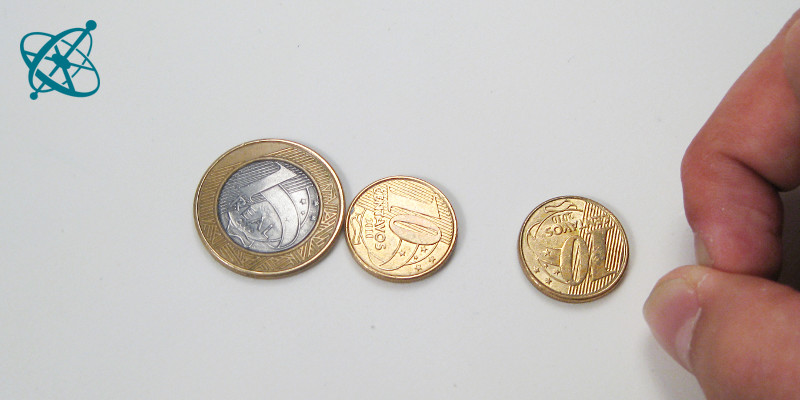
…many different settings.
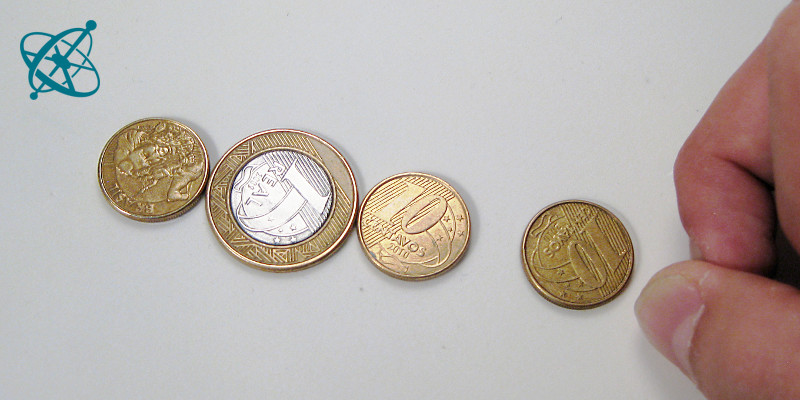
Explore, observe, and try to see 'the bigger picture'.
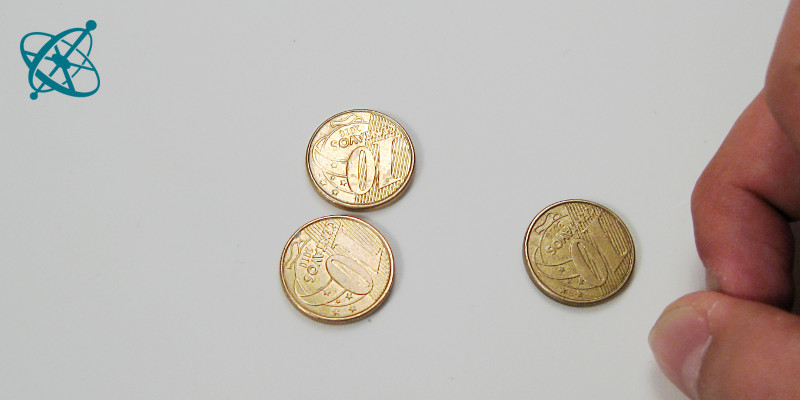
Coin Billiard
Sure, Newton's cradle is fascinating to look at, but the underlying physics can be explored much better and in more detail by simply snipping and colliding coins on a table. And yes, it's more fun too.
Gaining a feeling for elastic collisions.
Deducing the relevant physics at play from a series of experiments.
Observing the conservation of momentum and kinetic energy.
Table (or other smooth horizontal surface)
1. Snap a coin against another with your fingers and observe carefully: what happens to the speed of the two coins directly after the collision?
2. Use several coins of equal or different sizes, probe various arrangements and write down the outcome for each collision. What are the most important factors that determine the respective coin velocities after the collision?
There are many different types of elastic collisions your students can observe in this simple experiment. In particular, they should note that the outcome of a collision depends on the respective masses and velocities of the coins as well as the angle at which the coins collide. Make them list the different cases, for instance in form of a table.
If necessary, help them to see that both the kinetic energy and the momentum are conserved in the collisions. After discussing the mathematical model for one-dimensional elastic collisions, ask your students to explain their own observations based on this model.
